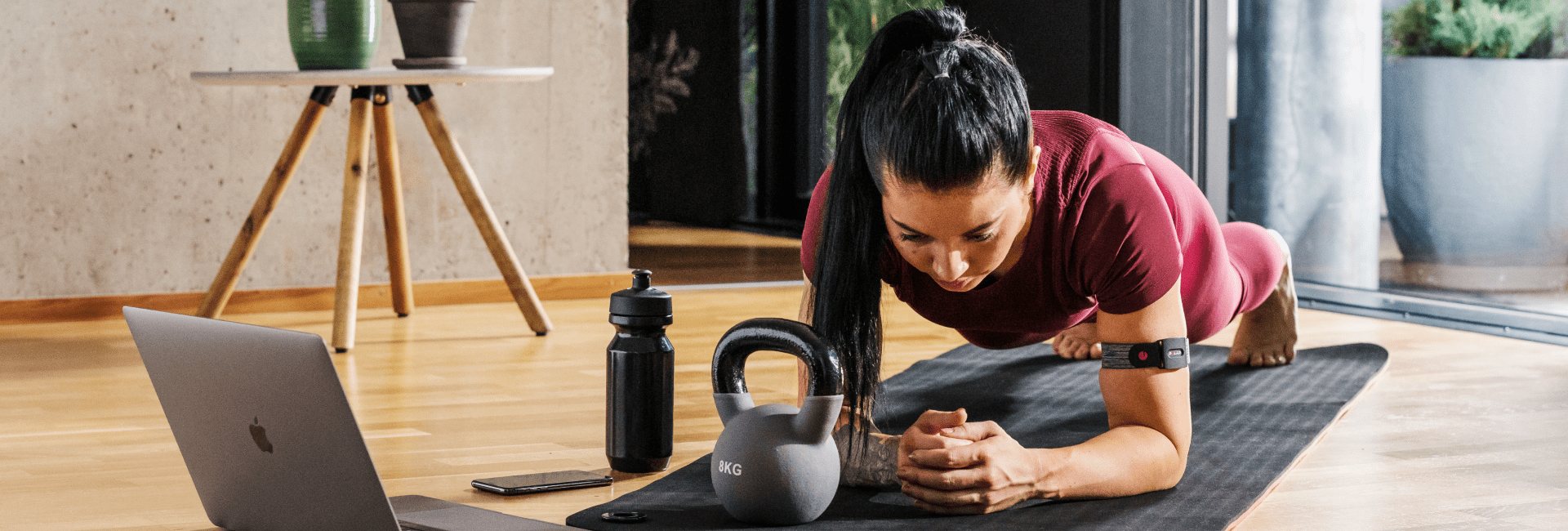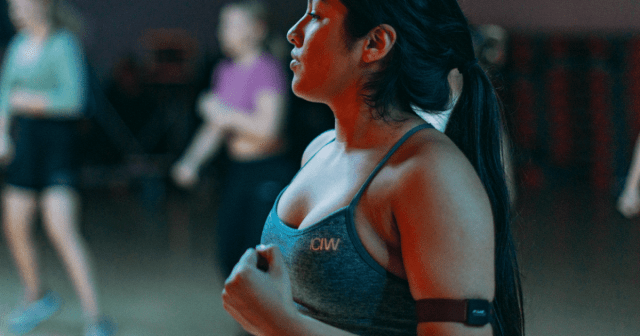Ready to experience the longest two minutes of your life? Or make that five minutes, depending on your approach. That’s what I encountered last month when I did a 30-day plank challenge.
I know. Such an endeavor sounds strangely like I want to create arduous tasks for myself for no reason. Not surprisingly, about 10 days in, I did have a “what am I even doing?” moment.
That led me to ask some big questions (and get professional insights) about the benefits of doing a plank challenge. After all, I wouldn’t describe holding a plank for minutes on end as a particularly fun thing to do.
So, here’s how I started out the year with what I thought would be a simple, straightforward fitness challenge. Little did I expect it would end up with me seeking out personal trainers in the know and tailor-making my own challenge on a spreadsheet to maximize my benefit (and, let’s be fair, minimize my boredom).

Why do a 30-day plank challenge?
Yes, why? I suppose I’m a sucker for a catchy challenge that slots neatly into a one-month time frame. I wanted it to deliver a sense of accomplishment at the end. And planks aren’t that hard, right?
The benefits of doing a plank are pretty obvious. Strengthening your abdominal muscles and aligning the vertebrae in your back with this workout will do wonders for your everyday posture. Keep it up, and you could help alleviate any current back pain or prevent developing it in old age.
The posture benefit is a big plus for me. As for so many of us these days, my life is spent hunched over a laptop, working from home in not the most ergonomic environment. As I’ve slid into my forties, I’ve also noticed my shoulders sliding increasingly forward as well. I figure anything I can do now to improve my posture will be seriously paying it forward for later life.
Boosting my core strength is an obvious win, too. It’s great for balance and decreases your chance of injury in a wide range of movements. I wanted to do something that would prep me for the intensive salsa classes I’m currently doing and hoped that a plank challenge would put me in good stead for this.
Classic 30-day plank challenge
Most plank challenges you’ll see floating around the internet look like the one below. You start on day one with a 10-second plank (easy peasy) and add another 10 seconds every day until you reach five minutes after 30 days. Pretty straightforward.
| Day 1 | Day 2 | Day 3 | Day 4 | Day 5 | Day 6 | Day 7 |
| 10 seconds | 20 seconds | 30 seconds | 40 seconds | 50 seconds | 60 seconds | 70 seconds |
| Day 8 | Day 9 | Day 10 | Day 11 | Day 12 | Day 13 | Day 14 |
| 80 seconds | 90 seconds | 100 seconds | 1 minute, 50 seconds | 2 minutes | 2 min, 10 seconds | 2 min, 20 seconds |
| Day 15 | Day 16 | Day 17 | Day 18 | Day 19 | Day 20 | Day 21 |
| 2 min, 30 seconds | 2 min, 40 seconds | 2 min, 50 seconds | 3 minutes | 3 min, 10 seconds | 3 min, 20 seconds | 3 min, 30 seconds |
| Day 22 | Day 23 | Day 24 | Day 25 | Day 26 | Day 27 | Day 28 |
| 3 min, 40 seconds | 3 min, 50 seconds | 4 minutes | 4 min, 10 seconds | 4 min, 20 seconds | 4 min, 30 seconds | 4 min, 40 seconds |
| Day 29 | Day 30 | |||||
| 4 min, 50 seconds | 5 minutes! |
How to set a countdown timer on your Polar sports profile
Core is obviously the most suitable Polar sports profile for a plank challenge like the one above. But how do you track it and focus on your form without having to count the seconds yourself? Simple. Once you’ve added Core to the sports profiles on your Polar watch and navigated to it from the Start Training menu, you’ll see a gear symbol (⚙️) on the right of your screen. Tap on this and select Countdown Timer. Here, you can set the time for your daily plank challenge and turn the timer on for this session. Top tip: add an extra few seconds so you’ll have time to get into your plank properly once the timer begins.
The best thing about this plank challenge is that it’s easy to start. Even though I felt tired on New Year’s Day, I still could manage a 10-second plank. But those ten-second increments do begin to add up quickly. By the time I reached day six and hit the one-minute mark, I was starting to get quite bored, which was concerning.
By day nine, the struggle started to feel real. The upside was that I was beginning to feel my core muscles engaging throughout the day, which was a great sign that this was having an effect. The downside was that if 90 seconds felt extremely challenging and monotonous, how on earth would I ever make it to a full five minutes?
Using a meditation breath helped to focus my mind, but as I edged closer to the two-minute mark, I was ready to throw in the towel. That’s when I started to look more into planks and ask deeper questions about what I would gain from all of this. Yes, I probably should have thought of these before jumping into this challenge.
You can see how I came to devise an alternative challenge below, but first, let’s look at how to make sure you’re getting your plank right.
What is proper plank form?
One thing I noticed while doing increasingly longer planks was how easy it was to lose form. It’s important to remember that if a plank is not done correctly, you risk hurting your back and spine, which is definitely not what you want to take away from your 30-day plank challenge.
So, what exactly constitutes proper plank form? For this, I referred to Lana Herzig, a New York City-based personal trainer and fitness instructor. “When performing a plank, it’s important to align your shoulders, hips, knees, and heels,” notes Lana. “Letting your lower back and core sag toward the ground, sticking your butt up in the air, and dropping or lifting your head are incredibly common mistakes when it comes to planks.”
One thing I found that was useful as the days rolled on and time increased was a visualization that Herzig recommends. By picturing a straight metal rod running through my body, from the base of my head right down to my heels, I was able to focus and maintain my plank form. Using a mirror also helps you check that you’re not making any of the above mistakes.
Never done a plank before? Here’s how to get into this core strength classic:
- Place your forearms on the ground with your elbows aligned below the shoulders and arms parallel to the body at about shoulder-width distance. You can put your hands flat on the ground or clasp them in the middle. Alternatively, you can do a plank with your hands directly under your shoulders (slightly wider than shoulder-width apart as if you’re about to do a push-up) but opt for forearms if you have a wrist injury.
- Ground your toes into the floor and tighten your core and glutes to stabilize your body. Pull your belly button in toward your spine.
- Look at a spot on the floor about a foot beyond your hands to help neutralize your neck and spine and keep your head aligned with your back.
- Hold the position for your set length of time. Don’t forget to breathe!
Are there actually any benefits to doing a 5-minute plank?
This is a crucial question to ask – and one that brings up some pretty divided opinions in the fitness world. Indeed, if Josef Šálek could hold a plank for a jaw-dropping 9 hours, 38 minutes, and 47 seconds (breaking the Guinness World Record in 2023), then holding one for a handful of minutes should certainly do me some good?
After some research, I came across Eric L’Italien, a physical therapist with Harvard-affiliated Spaulding Rehabilitation Center in Boston, USA. His perspective on planks is that after two minutes, there is little else you will gain from such an exercise. “I do believe there is a law of diminishing returns with planks held for a lengthy period of time,” notes Eric. “I am not opposed to 1–2-minute planks; this could probably benefit improvement in muscular endurance. I just think the time could be more effectively spent with a harder variation of the same exercise.”
Such an approach to planks really resonated with what I was experiencing. If hitting the two-minute mark ended my enthusiasm for the experience, why not mix it up?
How to tailor your plank challenge to work for you
Eric’s main recommendation was to break the time down and take an interval training-type approach to the challenge. “If I were to design a plank challenge, it would likely look like a build-up to 30 seconds bouts progressed to a plank with ankle dorsiflexion, then to alternating upper extremity reaching, and progressed to alternating hip extension to add some rotational stress to the exercise. After that, the sky is the limit.”
This approach gave me the impetus to shake things up beyond the one long, monotonous plank endeavor and introduce some other elements to the mix. The beauty is that you can make this challenge into whatever you want.
If you can’t hold a plank for more than 30 seconds, no problem. You can create a schedule where you do ten different variations for three days each. Want to see how far you can go before you get bored? Give it a try, then add some variations to keep things interesting.
I liked getting myself to that two-minute goal for the first 12 days. Then, I rewarded myself by dropping back to 10 seconds and building up to a minute again, adding a new variation each week. By the end of the month, I was holding a series of four one-minute planks (with a suitable rest time between sets). And boy, could I feel it in my core!
| Day 1 | Day 2 | Day 3 | Day 4 | Day 5 | Day 6 | Day 7 |
| 10 seconds | 20 seconds | 30 seconds | 40 seconds | 50 seconds | 1 minute | 1 minute, 10 seconds |
| Day 8 | Day 9 | Day 10 | Day 11 | Day 12 | Day 13 | Day 14 |
| 1 minute, 20 seconds | 1 minute, 30 seconds | 1 minute, 40 seconds | 1 minute, 50 seconds | 2 minutes | Plank 1: 10 seconds Rest: 30 seconds Plank 2 (ankles): 10 seconds | Plank 1: 20 seconds Rest: 30 seconds Plank 2 (ankles): 20 seconds |
| Day 15 | Day 16 | Day 17 | Day 18 | Day 19 | Day 20 | Day 21 |
| Plank 1: 30 seconds Rest: 30 seconds Plank 2 (ankles): 30 seconds | Plank 1: 40 seconds Rest: 30 seconds Plank 2 (ankles): 40 seconds | Plank 1: 50 seconds Rest: 30 seconds Plank 2 (ankles): 50 seconds | Plank 1: 1 minute Rest: 30 seconds Plank 2 (ankles): 1 minute | Plank 1: 10 seconds Rest: 30 seconds Plank 2 (ankles): 10 seconds Rest: 30 seconds Plank 3 (arms): 10 seconds | Plank 1: 20 seconds Rest: 30 seconds Plank 2 (ankles): 20 seconds Rest: 30 seconds Plank 3 (arms): 20 seconds | Plank 1: 30 seconds Rest: 30 seconds Plank 2 (ankles): 30 seconds Rest: 30 seconds Plank 3 (arms): 30 seconds |
| Day 22 | Day 23 | Day 24 | Day 25 | Day 26 | Day 27 | Day 28 |
| Plank 1: 40 seconds Rest: 30 seconds Plank 2 (ankles): 40 seconds Rest: 30 seconds Plank 3 (arms): 40 seconds | Plank 1: 50 seconds Rest: 30 seconds Plank 2 (ankles): 50 seconds Rest: 30 seconds Plank 3 (arms): 50 seconds | Plank 1: 1 minute Rest: 30 seconds Plank 2 (ankles): 1 minute Rest: 30 seconds Plank 3 (arms): 1 minute | Plank 1: 10 seconds Rest: 30 seconds Plank 2 (ankles): 10 seconds Rest: 30 seconds Plank 3 (arms): 10 seconds Rest: 30 seconds Plank 4 (hips): 10 seconds | Plank 1: 20 seconds Rest: 30 seconds Plank 2 (ankles): 20 seconds Rest: 30 seconds Plank 3 (arms): 20 seconds Rest: 30 seconds Plank 4 (hips): 20 seconds | Plank 1: 30 seconds Rest: 30 seconds Plank 2 (ankles): 30 seconds Rest: 30 seconds Plank 3 (arms): 30 seconds Rest: 30 seconds Plank 4 (hips): 30 seconds | Plank 1: 40 seconds Rest: 30 seconds Plank 2 (ankles): 40 seconds Rest: 30 seconds Plank 3 (arms): 40 seconds Rest: 30 seconds Plank 4 (hips): 40 seconds |
| Day 29 | Day 30 | |||||
| Plank 1: 50 seconds Rest: 30 seconds Plank 2 (ankles): 50 seconds Rest: 30 seconds Plank 3 (arms): 50 seconds Rest: 30 seconds Plank 4 (hips): 50 seconds | Plank 1: 1 minute Rest: 30 seconds Plank 2 (ankles): 1 minute Rest: 30 seconds Plank 3 (arms): 1 minute Rest: 30 seconds Plank 4 (hips): 1 minute |
As you can see, I added the following variations each week from Eric’s suggestions:
- Ankles: When Eric mentions ankle dorsiflexion, he’s referring to increasing the range of motion in these important yet overlooked joints. So, while keeping still in your plank (aka an isometric hold) on your elbows, contract your anterior tibialis without moving backwards. That means the muscle on the very front of your lower leg. This subtle variation will cause you to have to provide a second contraction to maintain your position, with your elbows digging into the surface and thus increasing the intensity of the core contraction.
- Arms: this was the variation I found most challenging. Eric suggested alternating arms by reaching them forward, one at a time, while holding your plank. You can also try other forms, such as reaching under your body, out to the side, or any movement that feels good.
- Hips: a simple alternating hip extension is lifting one leg straight off the ground, followed by the other. I’m strangely into Spiderman planks, so I would do that variation here. You can try it by bringing one bent knee towards the elbow on the same side.
Want some more ideas? Try searching for options like ankle taps, knee lifts, and side planks. There’s a whole range of variations you can do with planks in this challenge. It all comes down to what works for you.
How to set an interval timer on your Polar sports profile
The great news is that there’s a separate feature on your Polar sports profile to help you do this series of shorter exercises. Again, add Core to the sports profiles on your Polar watch and navigate to it from the Start Training menu. Tap the gear symbol (⚙️) on the right of your screen and select Interval Timer. Here, you can set two timers for your daily plank challenge: one for the interval length and another for your break time between sets. Top tip: switch on the backlight setting on the same menu for this session so your watch display will be illuminated throughout your training session. Very helpful for those grueling moments when you think the timer will never go off.
Ready to have a go?
So, what was the outcome of this workout adventure? Well, with plenty of tweaks and several trial-and-error attempts, I made it through the 30 days with a plank challenge that worked for me. It left me feeling strong, delivering that sense of accomplishment I sought.
Would I do it again? Absolutely, especially after I put all that effort into working out what worked for me. I also think in the future, I’ll be careful not to stop exercising entirely as soon as the challenge is over, but at least keep doing some stretches or similar in its place. I say that because, two weeks since I stopped, my back has begun to ache, which I’m taking as a sign that I’m slowly undoing all that good work.
What about you? Will you give it a try? Take a photo or video of your plank challenge, share it on social media, tag @polarglobal, and include what you did to tailor it for yourself.
If you liked this post, don’t forget to share so that others can find it, too.
Please note that the information provided in the Polar Blog articles cannot replace individual advice from health professionals. Please consult your physician before starting a new fitness program.





